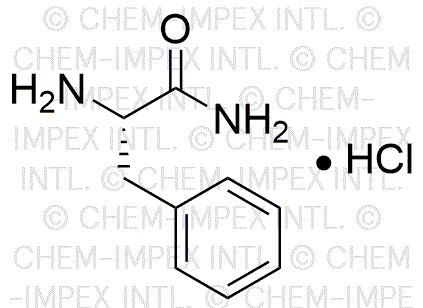L-Phenylalanine amide hydrochloride is widely utilized in research focused on:
- Neurotransmitter Support: This compound is a precursor to neurotransmitters like dopamine, making it valuable in studies related to mood regulation and cognitive function.
- Dietary Supplements: It is often included in nutritional products aimed at enhancing mental performance and reducing stress, appealing to health-conscious consumers.
- Pharmaceutical Development: Researchers explore its potential in developing treatments for conditions like depression and attention deficit disorders, providing innovative solutions in mental health.
- Protein Synthesis: In biochemistry, it serves as a building block for proteins, which is crucial for studies in cellular biology and metabolic processes.
- Flavoring Agent: The compound is also explored in the food industry for its potential to enhance flavors, offering an alternative to traditional flavor enhancers.
Informations générales
Propriétés
Sécurité et réglementation
Applications
L-Phenylalanine amide hydrochloride is widely utilized in research focused on:
- Neurotransmitter Support: This compound is a precursor to neurotransmitters like dopamine, making it valuable in studies related to mood regulation and cognitive function.
- Dietary Supplements: It is often included in nutritional products aimed at enhancing mental performance and reducing stress, appealing to health-conscious consumers.
- Pharmaceutical Development: Researchers explore its potential in developing treatments for conditions like depression and attention deficit disorders, providing innovative solutions in mental health.
- Protein Synthesis: In biochemistry, it serves as a building block for proteins, which is crucial for studies in cellular biology and metabolic processes.
- Flavoring Agent: The compound is also explored in the food industry for its potential to enhance flavors, offering an alternative to traditional flavor enhancers.
Documents
Fiches de données de sécurité (FDS)
La FDS fournit des informations de sécurité complètes sur la manipulation, le stockage et l’élimination du produit.
Spécifications du produit (PS)
Le PS fournit une description complète des propriétés du produit, notamment sa composition chimique, son état physique, sa pureté et les exigences de stockage. Il détaille également les plages de qualité acceptables et les applications prévues du produit.
Certificats d'analyse (COA)
Recherchez des certificats d'analyse (COA) en saisissant le numéro de lot du produit. Les numéros de lot et de lot se trouvent sur l'étiquette d'un produit, après les mots « Lot » ou « Lot de fabrication ».
Numéro de catalogue
Numéro de lot/série
Certificats d'origine (COO)
Ce certificat d'exploitation confirme le pays dans lequel le produit a été fabriqué, et détaille également les matériaux et composants utilisés et s'il est issu de sources naturelles, synthétiques ou autres sources spécifiques. Ce certificat peut être requis pour les douanes, le commerce et la conformité réglementaire.
Numéro de catalogue
Numéro de lot/série
Fiches de données de sécurité (FDS)
La FDS fournit des informations de sécurité complètes sur la manipulation, le stockage et l’élimination du produit.
DownloadSpécifications du produit (PS)
Le PS fournit une description complète des propriétés du produit, notamment sa composition chimique, son état physique, sa pureté et les exigences de stockage. Il détaille également les plages de qualité acceptables et les applications prévues du produit.
DownloadCertificats d'analyse (COA)
Recherchez des certificats d'analyse (COA) en saisissant le numéro de lot du produit. Les numéros de lot et de lot se trouvent sur l'étiquette d'un produit, après les mots « Lot » ou « Lot de fabrication ».
Numéro de catalogue
Numéro de lot/série
Certificats d'origine (COO)
Ce certificat d'exploitation confirme le pays dans lequel le produit a été fabriqué, et détaille également les matériaux et composants utilisés et s'il est issu de sources naturelles, synthétiques ou autres sources spécifiques. Ce certificat peut être requis pour les douanes, le commerce et la conformité réglementaire.


